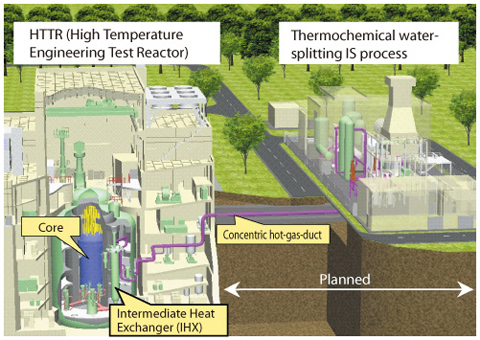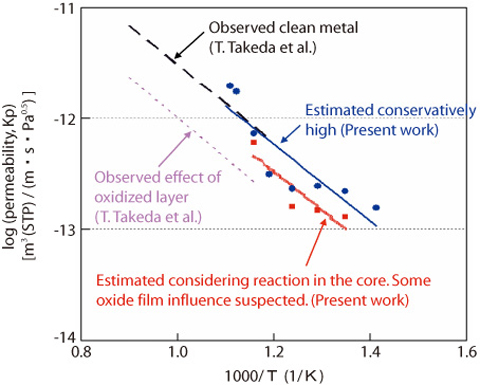
Fig.7-22 Hydrogen production by the HTTR(HTTR-IS system)

Fig.7-23 Hydrogen permeability of Hastelloy XR
The HTTR (High Temperature Engineering Test Reactor) -IS (Iodine-Sulfur) hydrogen production system is planned to demonstrate nuclear powered hydrogen production (Fig.7-22). A non-nuclear IS process is planned, and a problem for this is admixture of tritium in the produced hydrogen.
It is well known that hydrogen and its isotope permeate through metallic materials and that the adsorption and desorption at the surface and diffusion in the metal are dominant phenomena. Because diffusion velocity of tritium is about ![]() times that of hydrogen, the permeation of tritium can be estimated from that of hydrogen. Hydrogen permeation through Hastelloy XR, the material of the HTTR IHX (intermediate heat exchanger) heat transfer tubes, has been measured in the laboratory and it was found that an oxidized layer can reduce permeation of hydrogen efficiently. Also, the smallest possible tritium purification system is desired to reduce cost. Nuclear powered hydrogen production is being researched worldwide, but there has been no measurement of hydrogen permeation in an actual reactor, and the effect of oxidized layer on permeation has been unknown.
times that of hydrogen, the permeation of tritium can be estimated from that of hydrogen. Hydrogen permeation through Hastelloy XR, the material of the HTTR IHX (intermediate heat exchanger) heat transfer tubes, has been measured in the laboratory and it was found that an oxidized layer can reduce permeation of hydrogen efficiently. Also, the smallest possible tritium purification system is desired to reduce cost. Nuclear powered hydrogen production is being researched worldwide, but there has been no measurement of hydrogen permeation in an actual reactor, and the effect of oxidized layer on permeation has been unknown.
In this study, we could acquire the hydrogen permeation coefficients for the first time by using the impurity data during the HTTR 950°C operation.
The valuable permeation coefficients were obtained from macro experimental data as follows. Initially, the permeability was evaluated conservatively high for the safety case study. During the HTTR first 950°C operation, more hydrogen was found in the secondary system than in the primary. This indicates that hydrogen permeated from secondary to primary. Hydrogen is not considered to be generated in the core in the conservative evaluation and hence the amount of hydrogen that permeated was equal to that removed by the helium purification system (Blue line of Fig. 7-23). As a result, the activation energy and pre-exponential factor were 65.8kJ/mol and 7.8×10-9m3 (STP)/(m .s .Pa0.5), respectively, at 707-900K. Then, the permeability was evaluated realistically, considering the chemical reaction in the core (H2O+C→H2+CO). The fact that water content remains steady in the primary even though water is removed continuously suggests that the same volume of hydrogen is generated in the primary. The permeability decreases as shown by red line of Fig.7-23. Since the oxidized layer can reduce the permeability, the red line implies the oxidized layer was well formed on the surface of heat transfer tubes of the IHX.
We are planning R&D for establishing oxidized layer control during reactor operations. The results will be utilized for the purification system design of the HTTR-IS hydrogen production system